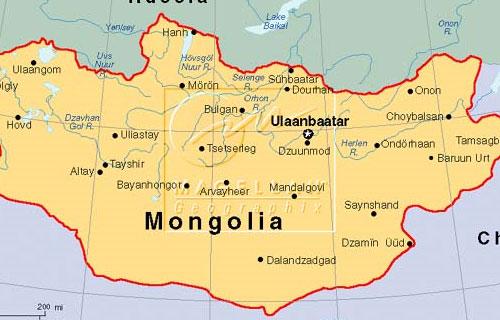Энэ 7 хоногт
Mongolia: Pentagon Trojan Horse wedged between China and Russia
Because of its history, its location and the nations which surround it, Mongolia would seem the last country in the world to host annual Pentagon-led military exercises and to be the third Asian country to offer NATO troops for the war in Afghanistan.

Because of its history, its location and the nations which surround it, Mongolia would seem the last country in the world to host annual Pentagon-led military exercises and to be the third Asian country to offer NATO troops for the war in Afghanistan.
From the early 1920s until the breakup of the Soviet Union in 1991 Mongolia was the former's nation's longest-standing and in many ways closest political and military ally, its armed forces fighting alongside those of the USSR against the Japanese in World War II. It was not a member of the Warsaw Pact as that alliance was formed in Europe six years after and in response to the creation of NATO in 1949, but Mongolia was a military buffer between the Soviet Union and the Japanese army in China in the Second World War and between it and China during the years of the Sino-Soviet conflict.
Mongolia is also buried deep within the Asian continent and is the world's second-largest landlocked nation next to Kazakhstan, which is only 21 miles from its western border. Those two countries along with North Korea, impenetrable in most every sense of the word, are the only three that border both China and Russia.
Mongolia's entire northern frontier is abuted by Russia and its eastern, southern and western borders by China. There is no way to enter the country except by passing through or over Russia and China.
As such Mongolia would have appeared to be a refuge of non-alignment in a world of rapidly expanding U.S. and NATO penetration of increasingly vast tracts of the earth's surface.
But in the post-Cold War period no country is beyond the Pentagon's reach, either inside or on its borders.
In the last decade alone the U.S. has acquired bases and other military installations and stationed its armed forces throughout parts of the world that it had never penetrated during the Cold War era, including:
Africa: Approximately 2,000 troops and the Pentagon's Combined Joint Task Force-Horn of Africa at Camp Lemonnier in Djibouti in the Horn of Africa.
Black Sea: Seven new air and training bases in Bulgaria and Romania and the de facto control of air, navy, infantry and surveillance bases in Georgia.
Baltic Sea: The activation in April of a Patriot Advanced Capability-3 theater interceptor missile battery in Eastern Poland with an initial contingent of 100 troops to run it.
Middle East: Air bases, forward operating bases, base camps, weapons storage facilities and troops transit centers in Iraq, Jordan and Kuwait and a long-range (2,900-mile) interceptor missile radar facility in Israel staffed by 120 U.S. military personnel.
Central Asia: An air base in Kyrgyzstan through which 35,000 U.S. and NATO troops transit each month for the war in Afghanistan and plans for a new special forces "anti-terrorist" training center in the nation.
South Asia: A proliferation of infantry and air bases in Afghanistan, including the mammoth Bagram Air Field with 25,000 military personnel and contractors. The Bagram military complex has been more than tripled in size since the 2001 invasion and is currently undergoing yet further large-scale expansion.
East Asia: The return of the U.S. military to the Philippines after being ordered to leave by the country's Senate in 1991 with at least 600 troops and two permanent structures in Camp Navarro in Mindanao where the U.S. Joint Special Operations Task Force-Philippines (JSOTF-P) is based.






